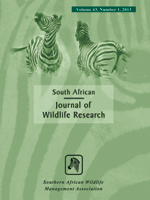The increasing prevalence of humans in areas used by elephants is a major challenge to elephant conservation. To investigate anthropogenic impacts on elephants, data on population structure, sex ratios, social structure and behaviour of elephants were examined along vehicle road transects in areas with different protection status. These included: Lake Manyara National Park (protected), Manyara Ranch (partially protected), and the adjacent communal area (non-protected). The maximum number of elephants seen in one day (with similar search effort per day) was 117 in the park and 25 on the ranch, suggesting a higher elephant density inside the park. No elephants were seen in the community area during the survey. In the park, the adult sex ratio was skewed towards females, while on the ranch the adult sex ratio was skewed towards males. The mean group size of elephants was significantly larger in the park compared to the ranch. Tusk sizes of male elephants were significantly larger in the park than on the ranch and elephants on the ranch were significantly more responsive to human approach than elephants in the park. Considering elevated rates of poaching for ivory in the ecosystem and the apparently poor safety for elephants in Manyara Ranch, we strongly suggest improving law enforcement on the ranch.
How to translate text using browser tools
1 April 2013
Elephant (Loxodonta africana) Demography and Behaviour in the Tarangire-Manyara Ecosystem, Tanzania
John Kioko,
Emily Zink,
Maggie Sawdy,
Christian Kiffner
ACCESS THE FULL ARTICLE
African elephant
behaviour
conservation effectiveness
Lake Manyara National Park
Manyara Ranch





